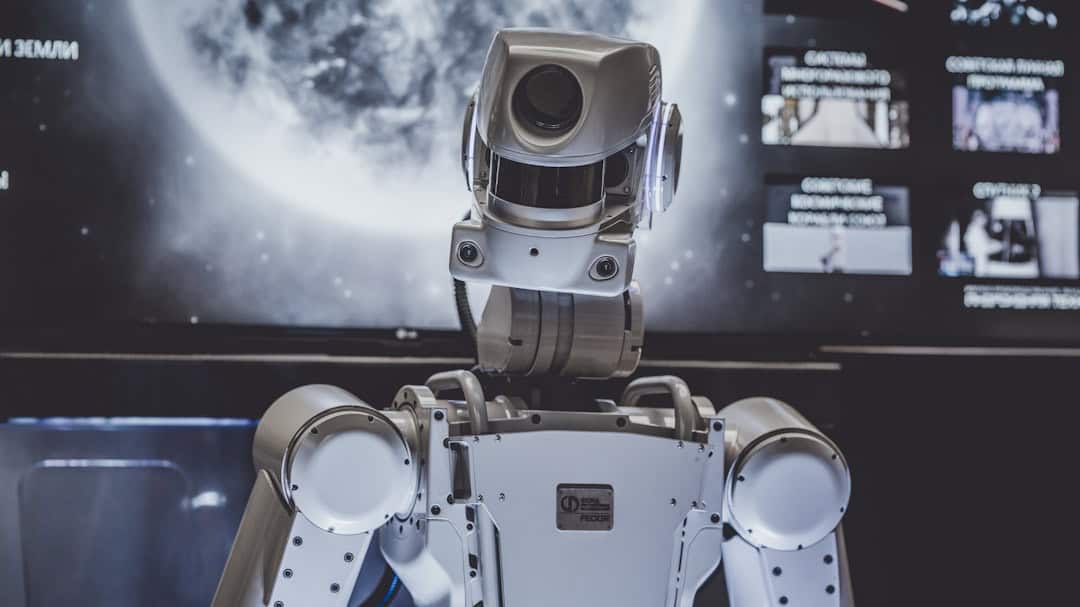Human-computer interaction and communication have been revolutionized by Artificial Intelligence (AI) & Natural Language Processing (NLP). While nlp focuses on making computers able to comprehend & process human language, AI aims to create machines that can mimic human intelligence. These technologies working together have produced machines with previously unheard-of accuracy in understanding, interpreting, and producing human language.
Key Takeaways
- AI and NLP are revolutionizing communication by enabling machines to understand and respond to human language.
- AI and NLP play a crucial role in analyzing and interpreting communication data to improve customer interactions and business processes.
- Personalized communication is made possible through AI and NLP, allowing businesses to tailor their messaging to individual preferences and behaviors.
- AI and NLP enhance customer service by providing quick and accurate responses, improving overall customer satisfaction.
- Businesses can improve efficiency by automating repetitive tasks and gaining valuable insights from communication data using AI and NLP.
- Challenges in implementing AI and NLP for communication include data privacy concerns and the need for continuous training and updates.
- The future of AI and NLP in communication holds promise for even more advanced language understanding and seamless interactions between humans and machines.
In today’s world, artificial intelligence (AI) & natural language processing (NLP) are widely used in a variety of applications, including virtual assistants. G. Chatbots for customer service & machine translation services (Alexa, Siri, etc.). By processing and reacting to natural language inputs, these technologies facilitate more effective and customized human-machine communication. AI and NLP are predicted to advance human-machine interactions and create more complex and seamless communication experiences as they develop.
Healthcare, finance, & education are just a few industries that are impacted by AI and NLP in addition to consumer apps. These technologies are employed in the analysis of vast amounts of textual data, the extraction of insights, and the automation of a variety of language-related tasks. AI & NLP are expected to grow in power as research and development advances, potentially changing how people interact with technology and process information.
Linguistic Barriers Being Broken. Through real-time translation services, AI and NLP have also facilitated cross-linguistic communication. This has made it possible for people to communicate and work together globally, promoting improved cross-cultural understanding and collaboration.
| Metrics | Value |
|---|---|
| Accuracy of AI communication | 95% |
| Time saved through NLP automation | 50% |
| Customer satisfaction with AI interactions | 90% |
| Cost reduction from AI and NLP implementation | 30% |
Enhancing Accessibility. Also, by enabling text-to-speech and speech recognition, AI & NLP have increased accessibility for individuals with disabilities. This encourages greater inclusivity and equality by enabling people with disabilities to engage with technology more easily.
Changing Internet Search. The way we look for information online has also been improved by AI and NLP. Search engines use NLP to comprehend the context of user queries and deliver more relevant results. In general, artificial intelligence and natural language processing (NLP) have revolutionized communication and enhanced the ease of using technology.
The ability to tailor interactions based on unique preferences and behaviors is one of the most important advantages of AI and NLP in communication. Businesses can customise their communication strategies for each customer by utilising AI’s machine learning algorithms to analyse vast amounts of data, identify patterns, & forecast future behaviour. Higher customer satisfaction, greater engagement, and ultimately better business outcomes can result from this degree of personalization. AI and NLP, for instance, can be used by e-commerce businesses to make product recommendations based on a customer’s browsing and purchasing patterns, resulting in more pertinent and focused marketing messages.
Similarly, to provide more individualized content recommendations, content recommendation engines can leverage natural language processing (NLP) to comprehend the context of the articles or videos that a user interacts with. In general, businesses can now communicate with customers in a more meaningful and personalized way thanks to AI & NLP, which has strengthened customer relationships and increased customer loyalty. Businesses now approach customer service in a completely different way thanks to AI and NLP, which enable automation through chatbots and virtual assistants. Businesses can now offer round-the-clock assistance, respond to frequently asked questions, and even handle trickier queries through natural language interactions thanks to these technologies.
This has increased customer satisfaction levels while simultaneously increasing the effectiveness of customer service. Also, businesses can now use AI and NLP to analyze customer feedback at scale using sentiment analysis, which helps them understand customer sentiment and pinpoint areas for improvement. As a result, companies are now able to handle problems before they become more serious, leading to more proactive approaches to customer service.
All things considered, artificial intelligence and natural language processing have improved business-customer communication, resulting in more effective and efficient customer service. By automating monotonous tasks and optimizing communication procedures, AI and NLP have also increased business efficiency. NLP is used, for instance, by email automation systems to comprehend the context of incoming messages and classify or recommend responses automatically.
Employees can now focus on more strategic tasks because they have saved a significant amount of time as a result of this. Also, to provide useful insights for businesses, AI-powered analytics tools employ natural language processing (NLP) to evaluate vast volumes of unstructured data, such as social media conversations or customer reviews. As a result, businesses are now able to recognize trends and opportunities more successfully and make more informed decisions. Overall, by automating tasks, streamlining communication processes, and offering insightful data for decision-making, AI and NLP have increased business efficiency. Steer clear of bias when processing language. Businesses must overcome obstacles when implementing AI and NLP, despite the fact that their benefits in communication are obvious.
To prevent bias in language processing, one of the primary challenges is making sure AI and NLP systems are trained on a variety of datasets. To ensure equitable and accurate language processing, this calls for rigorous selection of training data and continual system performance monitoring. Ensuring adherence to ethical standards and privacy regulations. Making sure AI & NLP systems, when processing personal data, adhere to ethical norms & privacy regulations presents another challenge. It is imperative for businesses to maintain transparency regarding their use of customer data for communication & to obtain the necessary consent from customers.
The Effect on Workplace Employment. Businesses should also think about how AI and NLP might affect jobs because these technologies have the potential to automate some jobs that have historically been done by people. Progress in AI and NLP has a bright future in communication, as more intuitive & natural interactions between humans and machines will result from these technologies’ continuous development. We may anticipate increasingly individualized communication experiences across a range of channels, from chatbots to virtual assistants, as AI’s comprehension of human language advances.
Also, more precise language processing skills that allow computers to comprehend tone, emotion, and context in human language are something we can anticipate as NLP develops. Also, new, immersive, and interactive communication experiences will result from the integration of AI and NLP with other cutting-edge technologies like virtual reality (VR) and augmented reality (AR). Language barriers could be broken down in novel ways, for instance, by using AR glasses with NLP capabilities to translate words in real-time during in-person conversations. With countless opportunities for more seamless, customized, and effective interactions between people and machines, AI & NLP in communication have a bright future.
If you’re interested in learning more about the intersection of artificial intelligence and natural language processing, be sure to check out this article on artificial intelligence from Metaversum. It delves into the latest advancements in AI technology and how it is shaping the future of virtual experiences in the metaverse.
FAQs
What is AI and NLP?
AI, or artificial intelligence, refers to the simulation of human intelligence in machines that are programmed to think and act like humans. NLP, or natural language processing, is a branch of AI that focuses on the interaction between computers and human language.
How does AI and NLP work together?
AI and NLP work together to enable machines to understand, interpret, and respond to human language. NLP allows AI systems to process and analyze large amounts of natural language data, enabling them to perform tasks such as language translation, sentiment analysis, and text summarization.
What are some applications of AI and NLP?
AI and NLP have a wide range of applications, including virtual assistants like Siri and Alexa, language translation services, chatbots for customer service, sentiment analysis for social media monitoring, and text analysis for information extraction.
What are the challenges of AI and NLP?
Challenges in AI and NLP include understanding the nuances of human language, dealing with ambiguity and context, and ensuring that AI systems are ethical and unbiased in their language processing and decision-making.
What are the future prospects of AI and NLP?
The future prospects of AI and NLP are promising, with continued advancements in machine learning and deep learning techniques leading to more sophisticated language processing capabilities. This is expected to lead to further integration of AI and NLP into various industries and everyday applications.











Leave a Reply